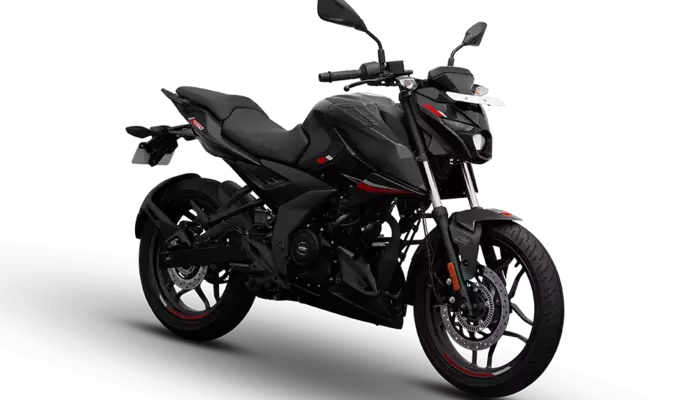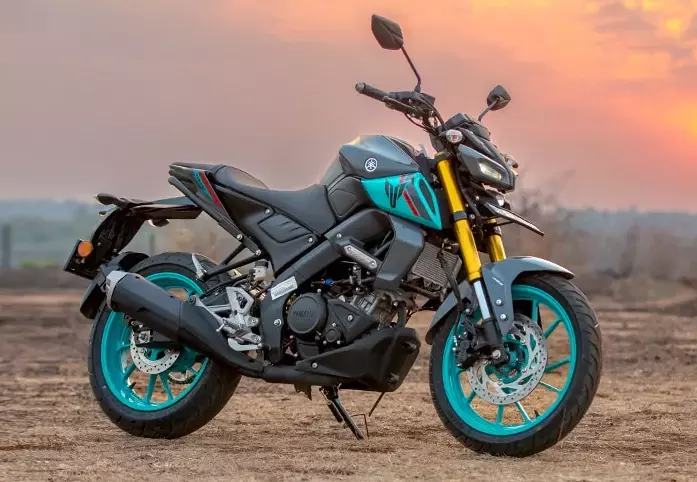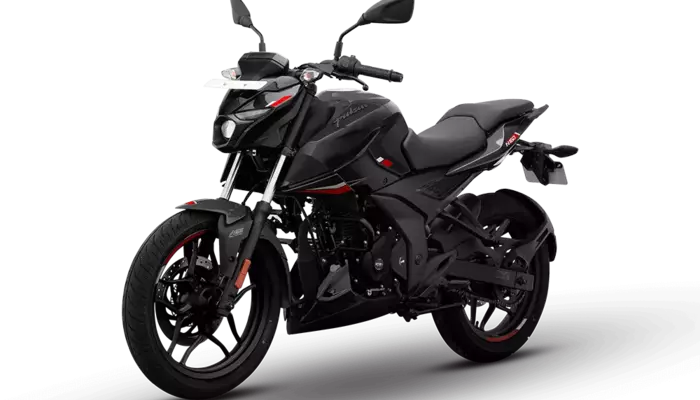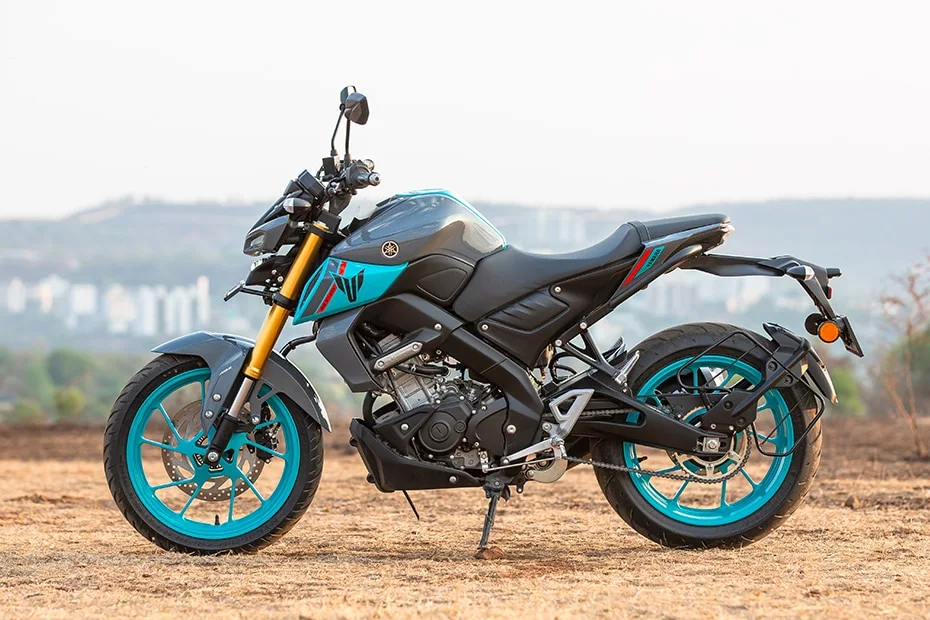
With the all-new Pulsar N160, Bajaj is trying to gain back the lost ground, which has been captured by the newer rivals, including the most premium and expensive sub-160cc naked roadster, the Yamaha MT-15. The new Bajaj Pulsar N160 has bettered its predecessors on the fronts of features and mechanical setups. On the other hand, the Yamaha MT-15, in this new Version 2.0 avatar, gets a more sophisticated suspension, more features and minor changes to its powertrain. Here, we find out which one of these two sub-160cc motorcycles is a more sensible purchase to make.
Price

The Bajaj Pulsar N160 is available in two versions. The single-channel ABS version is offered in Caribbean Blue, Racing Red and Techno Grey and is available at Rs 1,27,853, while the dual-channel ABS is available only in the Brooklyn Black colour option, which is priced at Rs 1,32,853.
On the other hand, the Yamaha MT-15 carries a significant premium of around Rs 36,000 over the Bajaj Pulsar N160. The prices of the MT-15 start at Rs 1,63,900 for the Metallic Black colour option. While the Ice Fluo Vermilion, Cyan Storm and Racing Blue colour options are priced at Rs 1,64,900, the top-spec Monster Energy Yamaha MotoGP Edition can be all yours for Rs 1,65,900.
| Model |
Bajaj Pulsar N160 |
Yamaha MT-15 |
| Price |
Rs 1,27,853 – Rs 1,32,853 |
Rs 1,36,900 – Rs 1,68,900 |
(prices mentioned above are ex-showroom, India)
ALSO READ: Kawasaki W175 vs Royal Enfield Hunter 350
Engine and Chassis

Instead of opting for the previous-gen 160cc engine of the Pulsar NS 160, Bajaj developed an all-new four-stroke, single-cylinder, two-valve, oil-cooled, 164.82cc for the Pulsar N160. Paired to a 5-speed gearbox, this engine develops 16 PS of maximum power and 14.65 Nm of maximum torque. The four-stroke, single-cylinder, 155cc of Yamaha MT-15 feels more technically advanced with a four-valve setup and liquid cooling, and also produces a higher power output of 18.4 PS. However, the toque output of the MT-15 is slightly lower at 14.65 Nm. The MT-15 also comes equipped with a 6-speed gearbox, against the 5-speed gearbox of the Pulsar N160.
Apart from the engine, the Yamaha MT-15 also has a technically-advanced chassis under its skin in comparison to the Pulsar N160. In its dual-channel ABS version, the Bajaj Pulsar N160 gets 37mm conventional telescopic forks and a 100/80-17 tyre at the front and a gas-charged Nitrox mono-shock and a 130/70-17 tyre at the rear. On the other hand, the Yamaha MT-15 has a better setup of 41mm upside-down hydraulic telescopic forks at the front and a 100/80-17 tyre at the front and a linked-type mono-shock and 140/70-R17 tyre at the rear. However, the 300mm front and 230mm rear disc brake combination of the Pulsar N160 is better than the 282mm front and 220mm rear disc brake setup of the MT-15.
| Specifications |
Bajaj Pulsar N160 |
Yamaha MT-15 |
| Engine |
Four-stroke, single-cylinder, two-valve, oil-cooled, 164.82cc |
Four-stroke, single-cylinder, four-valve, liquid-cooled, 155cc |
| Power |
16 PS @ 8,750 rpm |
18.4 PS @ 10,000 rpm |
| Torque |
14.65 Nm @ 6,750 rpm |
14.1 Nm @ 7,500 rpm |
| Transmission |
5-speed |
6-speed |
| Front suspension |
37mm telescopic forks (dual-channel ABS) / 37mm telescopic forks (single-channel ABS) |
41mm upside-down telescopic forks |
| Rear suspension |
Gas-charged Nitrox mono-shock |
Linked-type mono-shock |
| Front tyre |
100/80-17 |
100/80-17 |
| Rear tyre |
130/70-17 |
140/70-R17 |
| Front brake |
300mm disc (dual-channel ABS) / 280mm disc (single-channel ABS) |
282mm disc |
| Rear brake |
230mm disc |
220mm disc |
| ABS |
Dual-channel ABS / Single-channel ABS |
Single-channel disc |
ALSO READ: TVS Apache RTR 180 vs Honda Hornet 2.0
Dimension

The Yamaha MT-15 feels visually bigger than the Bajaj Pulsar N160, and that is proven by the figures on paper. The MT-15 is longer, wider and taller than the Pulsar N160, and also has higher ground clearance, lower kerb weight and a taller seat height. However, its 10-litre fuel tank is smaller than the 14-litre fuel tank of the Pulsar N160.
| Dimensions |
Bajaj Pulsar N160 |
Yamaha MT-15 |
| Length |
1989mm |
2015mm |
| Width |
743mm |
800mm |
| Height |
1050mm |
1070mm |
| Wheelbase |
1358mm |
1325mm |
| Kerb weight |
154 kg (dual-channel ABS) / 152 kg (single-channel ABS) |
139 kg |
| Ground clearance |
165mm |
170mm |
| Seat height |
795mm |
810mm |
| Fuel tank capacity |
14 litres |
10 litres |
Design and Features

The Bajaj Pulsar N160 looks nothing like the previous-generation Pulsar 150 and Pulsar NS 160, but rather looks like a scaled-down version of the Pulsar N250. It means it gets a new-gen design language with a triangular front fascia comprising of an LED projector headlamp with daytime running LEDs on its upper corners.
The Pulsar N160 is by far the edgiest looking naked version of the Pulsar, and that can be felt in the way its fuel tank, side panels and tail section look. The motorcycle gets a black theme for the engine, side panels and split pillion grab rails in the dual-channel ABS version, though the single-channel ABS version gets side panels and grab rails in a theme of silver and the engine in golden theme. The Pulsar N160 gets an aluminium bracket mounted on the tail section, vertically-laid LED tail lamps and a part-digital instrument console with an analogue tachometer and an LCD panel for speedometer, odometer, trip meters, gear indicator and trip computer with fuel efficiency readings.
The Yamaha MT-15 might have an older design compared to the Pulsar N160, but in comparison, it looks more global, larger-in-size and premium motorcycle, which makes it more desirable of the two. The MT-15 also gets a robot-like front fascia with daytime running LEDs and an LED projector headlamp nestled below them.
The fuel tank of the Yamaha MT-15 looks sportier, while the lean design for the side body panels and tail section makes the motorcycle look athletic. The slim and sporty-looking tail section ends up with a small LED tail lamp. The MT-15 misses out on split pillion grab rails and instead gets a long tubular grab rail mounted sideways. The MT-15 gets a fully-digital instrument console which looks more modern than the Pulsar N160’s unit while having all the information on display as those in the Pulsar N160’s unit. The MT-15’s console also features Bluetooth connectivity, which is an additional convenience while on the go.
ALSO READ: Royal Enfield Hunter 350 vs TVS Ronin
Verdict
Both the Bajaj Pulsar N160 and Yamaha MT-15 are two of the sportiest motorcycles in the sub-160cc category. But when you compare the two, there’s a wide price difference between the two motorcycles. Priced around Rs 36,000 lower, the Pulsar N160 might look like a more value-oriented offering with more torque and better brakes on offer. However, the Yamaha MT-15 feels like a more premium motorcycle of the two. For the premium it charges, the MT-15 offers a bigger bike experience, along with premium elements like liquid-cooling, a four-valve setup for the engine, higher power output, more features, wider rear tyre and better fit and finish levels.
ALSO READ:
You must be logged in to post a comment Login